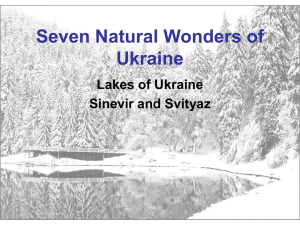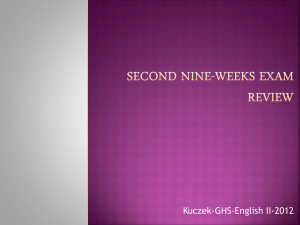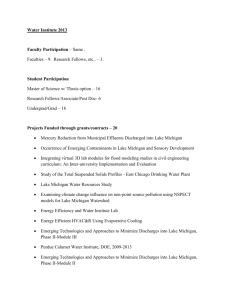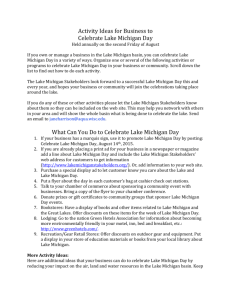Ppt0000000 - Habitat Project
advertisement
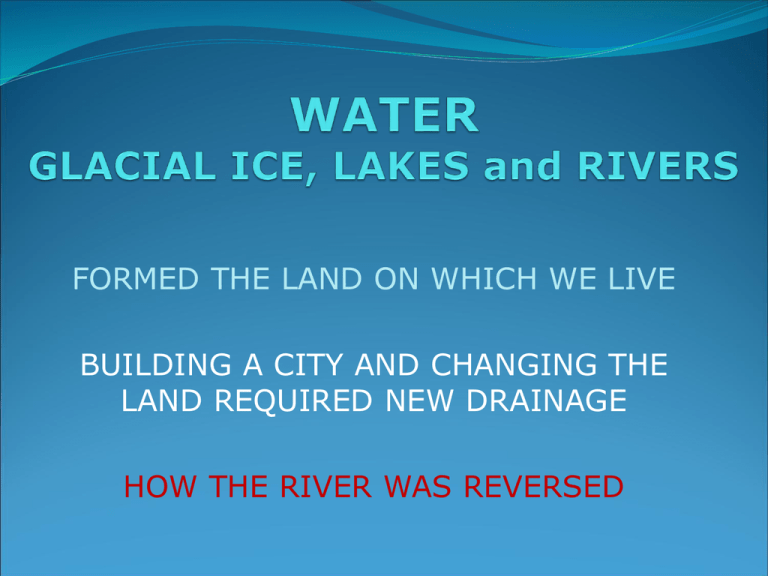
FORMED THE LAND ON WHICH WE LIVE BUILDING A CITY AND CHANGING THE LAND REQUIRED NEW DRAINAGE HOW THE RIVER WAS REVERSED Pattern of rivers parallel to the lake shoreline shows the influence of the moraines laid down as the lake receded. This continues south and east around the southern end of Lake Michigan. The density of streams is more pronounced where the land surface has more variation. The vast Chicago lake plain is lacking a network of streams, indicating the predominance of broad floodplains, wetlands and marshes. This ecology has been lost due to land development. Eleven million people now live in the watershed of the four states around the southern end of Lake Michigan, impacting the watershed as well as the lake. Half of this population lives in northeast Illinois and almost all of the stormwater and treated wastewater from northeast Illinois is diverted away from Lake Michigan, lessening the adverse impact on the lake. South Branch of the Chicago River PROBLEM AND SOLUTION Des Plaines River floods passing through Chicago to Lake Michigan Sewers discharging to the river and lake polluting the water supply Disgusting and smelly nuisance river Citizens’ Association City Commission on Drainage and Water Supply The Act of 1889 SANITARY DISTRICT OF CHICAGO Referendum on November 5, 1889 Shall the Sanitary District of Chicago be created to build a canal to reverse the flow in the Chicago River to protect Lake Michigan Vote: Yes, 70,958; No, 242 Steam Shovel Excavating the Canal Dynamite Blast to Break Up the Bedrock Chicago Area Waterway System Protects Lake Michigan Copyright 2012 Hardcover Softcover EBook 386 pages 16 maps 180 photographs Self published Xlibris.com AND NOW LAKE DANCE! Polluted River Flowing to Lake Michigan Blasting the Bedrock to Dig the Canal Steam Shovel Digging the Canal






